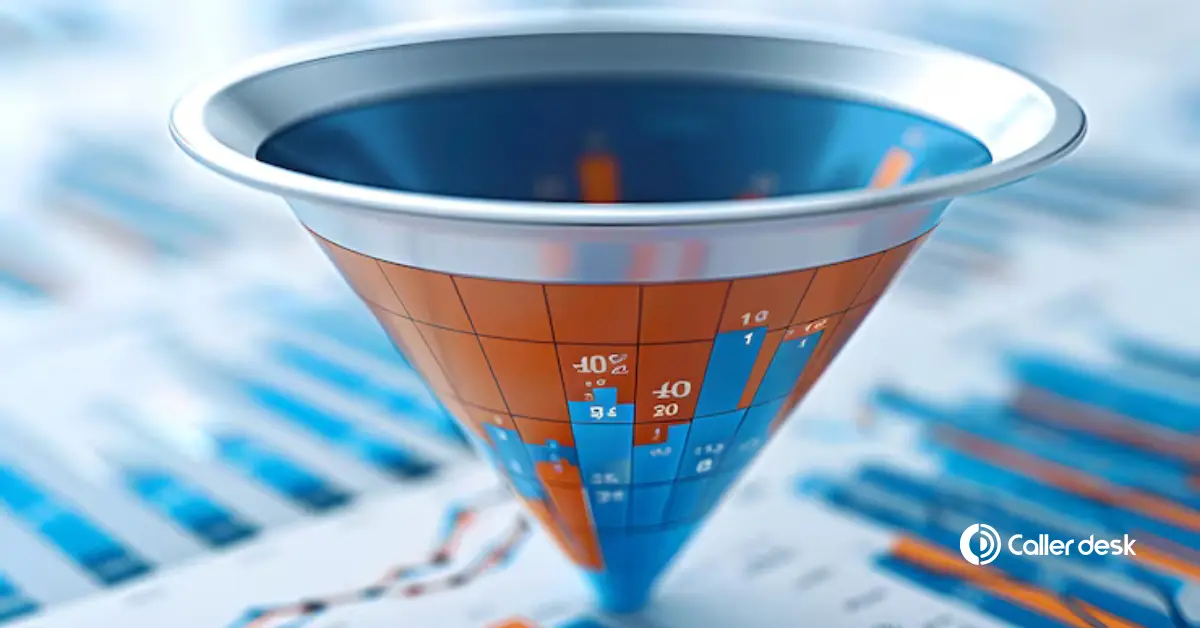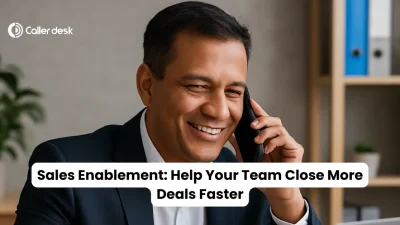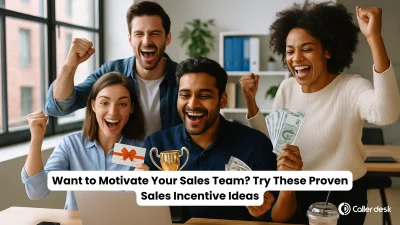Let’s be honest — getting customers isn’t easy.
You post on Instagram.
You run ads.
You write blogs.
But people visit your site and… nothing happens.
No sign-ups. No sales. Just crickets.
That’s where a sales funnel can help.
A sales funnel is like a smart plan that guides people — step by step — from just hearing about your business to actually buying something.
It helps you:
- Get more leads
- Turn visitors into paying customers
- And grow your business faster (without guessing what to do next)
In this guide, I’ll show you exactly how a sales funnel works, what each step means, and how to build one that actually gets results — even if you’re just starting out.
What is a Sales Funnel?
A Sales Funnel is a simple way to show how people become your customers step by step.
It starts when someone first hears about your business and ends when they finally buy something.
Imagine a funnel like the one used in a kitchen:
- At the top, lots of people see your ads, social media, or website.
- As they move down, some people lose interest, but others keep learning more.
- At the bottom, the people who are really interested finally decide to buy from you.
It’s called a “funnel” because many people start at the top, but only a few reach the end and become paying customers.
6 Stages of a Sales Funnel
Every customer goes through a few simple steps before they buy something. These steps are called the sales funnel. Let’s walk through each one with clear examples you can easily understand.
1. Awareness – “Oh, this brand looks familiar.”
Goal: Let people know your business exists.
This is the top of the sales funnel, where you attract attention. People at this stage are not ready to buy – they’re just discovering that you exist. The focus here is to create visibility and spark interest.
How people reach this stage:
- Seeing your social media ads or posts
- Finding your blog through a Google search
- Hearing about you through word of mouth or influencers
What to do:
Create helpful and engaging content that solves a problem or answers a question. The aim is to get noticed.
Best content types:
- Blog articles
- Infographics
- YouTube videos
- Paid ads (Google, Facebook, Instagram)
2. Interest Stage – Building Curiosity
Goal: Make people want to learn more about your product or service.
At this stage, users are aware of your brand and want to explore further. They’re trying to figure out if what you offer is useful or relevant to them.
Customer behavior in this stage:
- Browsing your website or product pages
- Following your brand on social media
- Reading customer reviews or FAQs
What to do:
Start providing deeper content that educates, informs, and shows the benefits of your solution.
Best content types:
- eBooks or downloadable guides
- Educational videos or webinars
- Email newsletters
- Blog posts with expert tips
3. Evaluation Stage – Comparing Options
Goal: Show why your solution is better than others.
Now the potential customer is serious. They are comparing features, prices, reviews, and considering competitors. Your job is to make the decision easier by offering clarity and confidence.
Customer behavior in this stage:
- Comparing your product with competitors
- Watching product demos or explainer videos
- Asking for detailed information or pricing
What to do:
Use social proof and comparisons to highlight your strengths and remove doubts.
Best content types:
- Case studies
- Product demo videos
- Customer testimonials
- Feature comparison tables
4. Decision Stage – Ready to Buy
Goal: Help the customer take final action.
This is where the prospect becomes a buyer – if you guide them correctly. They’re almost convinced, but may need a small push like a limited-time offer, free trial, or easy checkout experience.
Customer behavior in this stage:
- Adding items to the cart
- Contacting your sales team
- Looking for discounts or guarantees
What to do:
Make the purchase process simple, quick, and reassuring.
Best tools and content:
- Free trials or samples
- Limited-time discounts or offers
- FAQs or live chat
- Secure and fast checkout process
5. Action Stage – Completing the Purchase
Goal: Turn the prospect into a customer.
The purchase is made. But your job isn’t done. Now you need to deliver a smooth onboarding experience, reinforce their decision, and prepare them for future engagement.
Customer behavior in this stage:
- Completing payment
- Receiving order confirmation
- Starting to use the product or service
What to do:
Welcome them warmly and guide them on what to do next.
Best practices:
- Send thank-you and onboarding emails
- Offer step-by-step setup guides or tutorials
- Provide clear contact support channels
6. Retention Stage – Building Loyalty
Goal: Keep customers coming back and turn them into brand advocates.
This final stage is about long-term success. Repeat customers are more valuable and easier to convert. If they had a good experience, they’ll stay with your brand and even recommend you to others.
Customer behavior in this stage:
- Reordering or upgrading
- Referring friends
- Joining your loyalty or membership programs
What to do:
Strengthen relationships, keep them engaged, and offer continued value.
Best strategies:
- Loyalty and referral programs
- Product recommendations
- Personalized email follow-ups
- Community or membership access
Best Content to Use at Each Stage of the Sales Funnel
Every stage of the sales funnel needs different types of content to guide your customer forward. Here’s a simple list of what to share and when:
| Funnel Stage | What It Means | Content You Can Use |
| Awareness | People are hearing about your brand for the first time. | Blog posts, Instagram Reels, Facebook/Google ads, short videos |
| Interest | They’re curious and want to learn more. | eBooks, helpful email series, free webinars, how-to guides |
| Evaluation | They’re comparing you with others. | Customer reviews, success stories, demo videos, pricing pages |
| Decision | They’re almost ready to buy but have questions. | FAQs, limited-time offers, live chat, product comparisons |
| Action | They’re ready to buy now. | Easy checkout page, confirmation email, setup or welcome guide |
| Retention | They’ve bought — now keep them coming back. | Loyalty points, exclusive discounts, thank-you emails, referral programs |
B2B Vs B2C Sales Funnels?
Not all sales funnels are the same. It depends on who you are selling to:
B2C (Business to Customer)
This is when you sell directly to individual people—like clothes, phones, or beauty products.
- The funnel is usually short and quick.
- People buy based on feelings, looks, and fast decisions.
- They like things that are fun, simple, and visual.
Example: A person sees a shirt ad, clicks, likes it, and buys it—all within 10 minutes.
B2B (Business to Business)
This is when you sell to other companies—like software, machines, or services.
- The funnel takes longer because more people are involved in making the decision (like managers, finance teams, etc.).
- They want facts, proof, and value for their money.
- The content needs to be detailed, professional, and helpful.
Example: A company finds a CRM tool, compares it with others, reads reviews, has team meetings, and then decides to buy it after weeks.
How to Build Your Own Sales Funnel (Step-by-Step)
You don’t need to be an expert to build a Sales Funnel. Just follow these simple steps:
1. Know Your Customer
Start by understanding who your ideal customer is.
Ask yourself:
- What problems are they trying to solve?
- What age, job, or lifestyle do they have?
- What makes them interested in your product?
When you know your customer well, it’s easier to talk to them in a way that gets their attention.
2. Get Their Attention
Now that you know who you’re talking to, it’s time to get noticed.
Use things like:
- Social media posts
- Paid ads (on Google or Instagram)
- Helpful blog articles
Your goal here is simple — make people curious enough to visit your website or page.
3. Collect Their Details
Once they’re on your page, don’t let them leave empty-handed.
Offer something useful in exchange for their email or phone number:
- A free guide
- A discount code
- A free trial
This step turns visitors into leads you can talk to again.
4. Build Trust and Stay in Touch
Now that you have their contact info, send them helpful content.
For example:
- Tips, tutorials, or product info
- Customer success stories
- Newsletters
Your goal is to make them feel confident about buying from you.
5. Close the Sale
When they’re ready to buy, give them a strong reason to do it now:
- A limited-time offer
- A discount
- A product demo
Make the buying process simple, smooth, and fast.
6. Keep the Relationship Going
Even after the sale, don’t stop talking to your customer.
- Thank them for their purchase
- Offer help or new tips
- Send updates or loyalty rewards
Happy customers often come back — and they tell others about you.
Tools to Make Your Sales Funnel Work Better
Here are some tools that can help you build and manage your sales funnel:
- CRM tools (like Salesforce, Zoho, or HubSpot)
Help you manage your customer data and follow up easily. - Email marketing tools (like Mailchimp, ConvertKit)
Let you send automatic emails to keep your leads engaged. - Landing page builders (like Unbounce, Leadpages)
Help you create simple web pages to collect leads. - Automation tools (like Pabbly, Zapier)
Save time by doing follow-ups, reminders, and data entry for you.
Conclusion
A Sales Funnel helps you turn people who just hear about your business into happy, paying customers.
By guiding them step by step — from awareness to purchase — you can increase sales, save time, and build better customer relationships.
And to make it all work smoothly, you need the right tools.
If you’re looking for a simple way to manage calls, follow-ups, and customer support, CallerDesk is the best cloud telephony provider in India. It helps your sales funnel run faster and smarter — all in one place.
Start growing your business with CallerDesk today.



